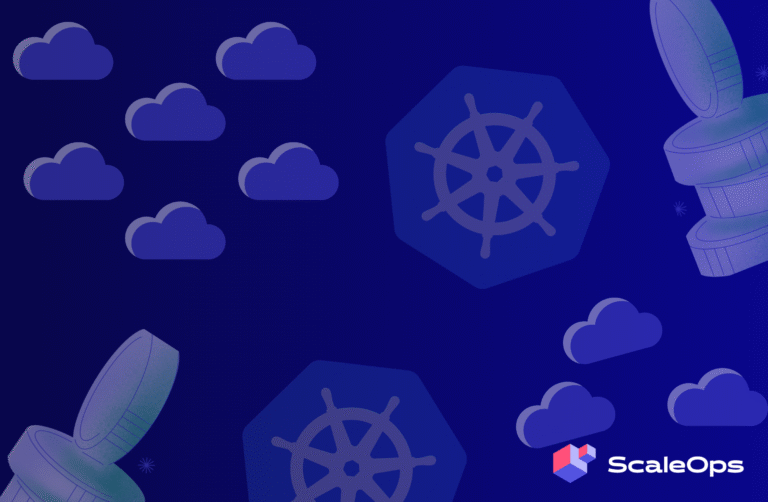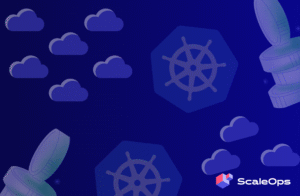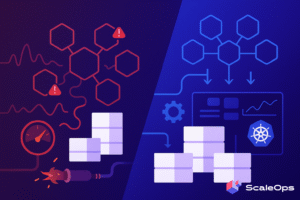In the world of cloud computing, cost optimization is a critical concern for organizations running applications on Kubernetes. To address this challenge, many organizations have turned to solutions like Cluster Autoscaler to automatically adjust the number of nodes in a cluster to match workload requirements. However, there is another solution worth considering – Karpenter. In this blog, we will take a deep dive into Karpenter and explore how it differs from Cluster Autoscaler, and the benefits it offers for cost optimization in Kubernetes.
Cluster Autoscaler:
Cluster Autoscaler is widely used in Kubernetes environments. It helps to ensure the cluster size is always matched the actual pods’ requirements. It operates by checking if there are any pending pods that could not be scheduled due to a lack of available resources provisions a new node to the cluster if needed. Furthermore, the cluster autoscaler will continuously attempt to run bin-packing by scale down existing nodes. The bin-packing is done by iterating over the nodes and checking if running pods can be rescheduled to other existing nodes.
Karpenter:
Karpenter is an open-source, flexible, high-performance Kubernetes cluster autoscaler built by Amazon Web Services (AWS). It improves application availability and cluster efficiency by rapidly launching right-sized compute resources in response to changing load of the cluster in AWS environments.
Advantages of Karpenter:
Advanced Node Consolidation:
Karpenter has advanced bin-packing and consolidation capabilities to further reduce compute costs. It continuously identifies opportunities to remove oversized nodes and consolidate pods onto more efficient compute resources while taking into consideration nodes costs. The consolidation contains the following three mechanisms:
- Empty Node Consolidation – Delete any entirely empty nodes in parallel.
- Multi-Node Consolidation – Try to delete two or more nodes in parallel, possibly launching a single replacement that is cheaper than the price of all nodes being removed.
- Single-Node Consolidation – Try to delete any single node, possibly launching a single replacement that is cheaper than the price of that node.
Faster Node Provisioning:
Cluster autoscaler provisions nodes by communicating with the Auto Scaling Group to increase or decrease the number of nodes, then the Auto Scaling Group will do the node provisioning. On the contrary, Karpenter manages the nodes directly which speeds things up drastically. This mechanism enables Karpenter to retry to provision nodes in milliseconds instead of minutes when capacity is unavailable.
Minimal Operational Overhead:
Before Karpenter, Kubernetes users needed to dynamically adjust the compute capacity of their clusters to support applications using Amazon EC2 Auto Scaling group. In contrast, Karpenter requires no configuration and can leverage diverse instance types, availability zones, and purchase options without the creation of hundreds of node groups.
ScaleOps and Karpenter combined:
ScaleOps seamlessly integrates with Karpenter and enhances its resource optimization capabilities. By running both ScaleOps and Karpenter clusters will be much more optimized in terms of cost and performance:
- Drastic compute savings:
– ScaleOps will continuously and automatically update pods’ resource requests and limits during runtime with zero downtime to match the container’s real resource consumption in real-time, to verify the containers are performing best while eliminating unused resources.
– Karpenter will optimize the gap between the cluster’s total resource requests and the cluster’s total capacity to eliminate cloud waste.
- Faster response time:
– ScaleOps will continuously optimize HPA triggers during runtime to continuously match best SLAs, and will enforce the best number of replicas of every workload will always be up and running.
– Karpenter will provision new nodes for pending pods faster leading to faster response times when the HPA triggers scale-up events.
Conclusion:
In conclusion, combining Karpenter and ScaleOps offers a powerful and full solution for managing and scaling your Kubernetes cluster. Karpenter’s ability to quickly and efficiently provision nodes in response to changing cluster loads makes it a valuable tool in AWS Kubernetes environments. However, the true value of Karpenter comes when it is combined with ScaleOps, which automates the entire scaling process from start to finish. With ScaleOps, you can ensure that your Kubernetes cluster is always running at the optimal level of resources, without having to constantly monitor and manually adjust your infrastructure. The combination of Karpenter and ScaleOps will continuously and automatically provide your clusters with cost reduction and the best performance.













